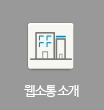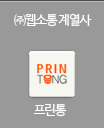A Brief History Of High Quality Fakes In 10 Milestones
페이지 정보
작성자 Otis Jackey 작성일25-07-03 07:43 조회41회 댓글0건본문
High-Quality Fakes: The Intricacies of Authenticity in the Modern Marketplace
In a period defined by fast globalization, online shopping, and the democratization of luxury, the development of high-quality fakes has ended up being a substantial phenomenon. As customers significantly seek status signs at accessible costs, counterfeit products-- especially those crafted with exceptional ability-- have gained traction. This short article dives into the world of high-quality fakes, exploring their implications, the industries most affected, and the ethical factors to consider they raise.

Understanding High-Quality Fakes
High-quality fakes refer to counterfeit items that are designed to closely imitate the appearance, functionality, and even branding of genuine high-end items. Unlike lower-quality knockoffs that are often identified by their apparent flaws, high-quality fakes can be so convincingly produced that they might quickly pass as authentic to the untrained eye.

Attributes of High-Quality Fakes:
- Material Quality: These fakes often use products that carefully resemble or reproduce those used in genuine products, making them aesthetically appealing and challenging to differentiate from originals.
- Craftsmanship: Skilled craftsmens may craft these items with accuracy, developing in on the details that set the designer items apart from subpar copies.
- Restricted Editions: Some counterfeiters make use of the allure of restricted editions, producing fakes in little amounts to improve their desirability.
- Branding Techniques: High-quality fakes are typically branded utilizing advanced techniques, leading consumers to think they are buying authentic product.
The Industries Most Affected
The market for high-quality fakes is not restricted to any specific sector; nevertheless, a couple of markets are particularly susceptible:
Luxury Fashion: Throughout the years, luxury style brands have dealt with a barrage of counterfeiting, from purses to shoes and apparel. With consumers progressively budgets in mind, high-quality fakes are appealing options to authentic products.
Fashion jewelry: Counterfeit precious jewelry, particularly replicas of renowned pieces from prominent homes, can be nearly identical from the real thing. These fakes pose difficulties for consumers who may have a hard time to determine the difference.
Customer Electronics: With the constant development of innovation, Fälschungen kaufen fake versions of popular gadgets, particularly smart devices, have emerged. These gizmos frequently feature similar styles however might compromise on quality or performance.
Art and Collectibles: The art market deals with considerable issues with forgeries, with some fakes garnering high costs regardless of lacking authenticity. Collectors typically confront issues concerning the provenance of their pieces.
The Impact on Consumers and Brands
While the attraction of high-quality fakes might be alluring to some customers, it's important to consider the implications of purchasing such items.
Pros for Consumers:
- Affordability: High-quality fakes provide a more affordable option for customers who wish to delight in luxury items without paying premium costs.
- Fashionable Options: Counterfeit products frequently imitate the current trends, enabling customers to remain stylish without significant financial investment.
Cons for Consumers:
- Lack of Authenticity: Purchasing a high-quality fake may lead to sensations of regret or deception, especially for customers who value brand name stability.
- Quality Risks: While some fakes are high quality, others might not meet safety requirements or offer the toughness associated with authentic products.
Effect on Brands:
- Profit Loss: Luxury brand names experience substantial income losses due to counterfeit products undercutting their market share.
- Brand name Equity: The proliferation of high-quality fakes can dilute a brand name's value and contributions to its distinct identity within the market.
Browsing the Terrain: How to Spot High-Quality Fakes
For customers thinking about purchasing authentic items, being able to recognize high-quality fakes is necessary. Here are some pointers:
Research the Brand: Familiarize yourself with the brand name, its values, and its design elements. Educated customers are less most likely to succumb to counterfeit items.
Check Materials: Authentic high-end products frequently utilize superior materials. If something feels off, it may not be genuine.
Check for Certification: Reputable brand names often provide certifications or authenticity cards with their items. These can be helpful in confirming a product's legitimacy.
Buy From Trusted Sources: Stick to authorized sellers or official websites to reduce the risk of obtaining a high-quality fake.
Keep In Mind of Pricing: If the offer seems too excellent to be real, it likely is. Be wary of prices significantly lower than those of verified retailers.
Ethical Considerations
The rise of high-quality fakes brings forth ethical concerns surrounding customer rights, brand name ownership, and creative liberty. Some argue that consumers deserve to access the luxury market at their financial discretion. Alternatively, others highlight the significance of supporting genuine workmanship and creativity.
Questions to Consider:
- Can high-quality fakes contribute positively to a more equitable market?
- How do high-quality fakes challenge the traditional notions of worth and luxury?
- Is it ethical to accept counterfeit culture in a world where creativity is being progressively questioned?
FAQs
Q1: Are high-quality fakes unlawful?
A: Yes, producing and offering counterfeit goods is unlawful in most jurisdictions as it violates copyright rights.
Q2: What should I do if I unwittingly purchased a high-quality fake?
A: Contact the seller to go over a return, and consider reporting the concern to the appropriate authorities or trade companies.
Q3: How can I support brand names affected by counterfeit items?
A: Opt to buy directly from licensed sellers, advocate for awareness concerning counterfeiting, and assistance anti-counterfeit campaigns.
Q4: Are high-quality fakes always of lower quality than originals?
A: Not necessarily. Some high-quality fakes are crafted with fantastic ability and can rival the look of genuine items, though they may do not have the sturdiness and craftsmanship of genuine items.
High-quality fakes provide a complicated intersection of consumer desire, brand name ethics, and economic truths. As this phenomenon continues to unfold, it is vital to browse this landscape with awareness and understanding. Both customers and brands must face the consequences-- both positive and negative-- of this growing market. In a world progressively shaped by replicas, the pursuit of authenticity becomes ever more important.
댓글목록
등록된 댓글이 없습니다.




















